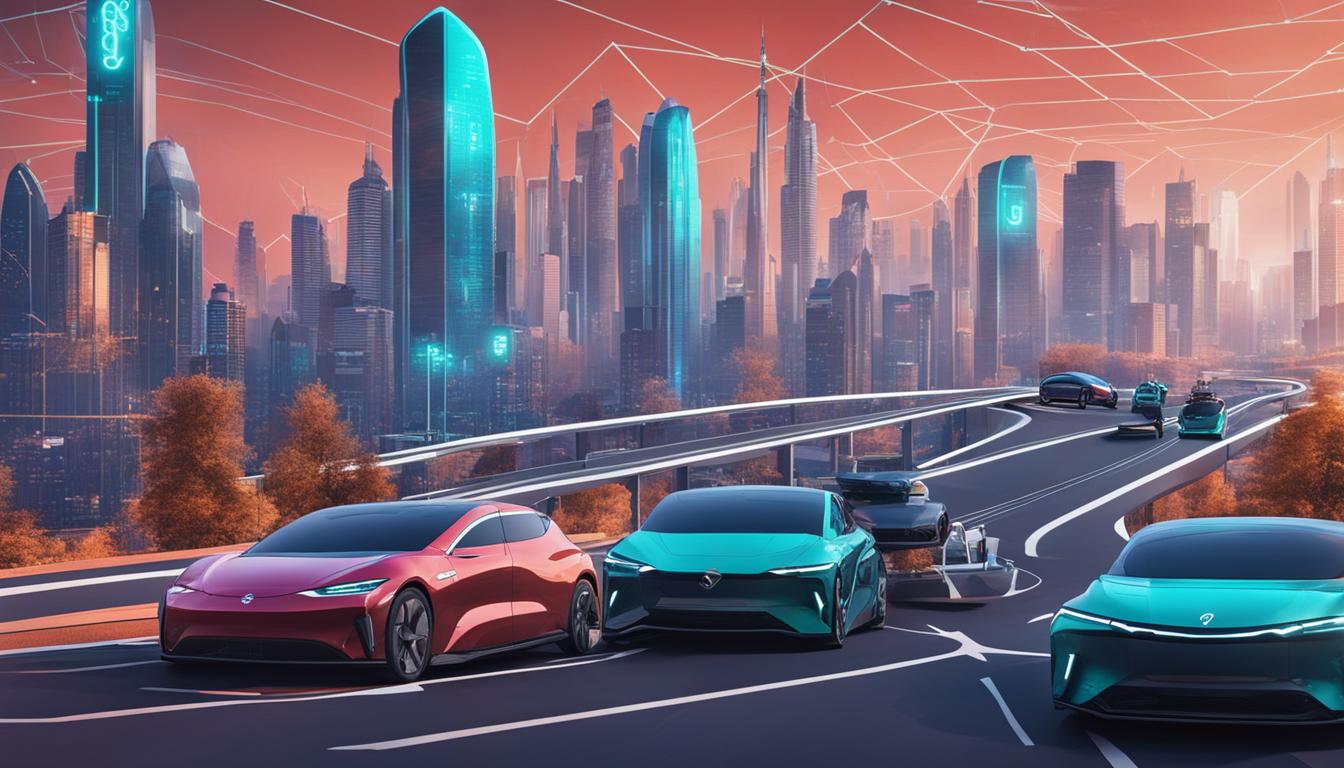Exploring Future Depreciation: Will EVs and ICE Differ?
The automotive landscape is on the cusp of a significant transformation as electric vehicle (EV) adoption accelerates, prompting industry experts to closely monitor future vehicle depreciation trends.
Amidst this shift, the debate intensifies over how electric vehicle depreciation will measure up against the decline in value experienced by traditional internal combustion engine (ICE) vehicles.
The complexity of predicting EVs vs ICE depreciation rates stems from the evolving nature of automotive technology and the unique attributes distinguishing EVs from their ICE counterparts. With projections indicating a substantial influx of EVs by 2035, it’s imperative to delve into how these greener alternatives will impact long-established residual value metrics.
A defining factor in determining the future of vehicle depreciation rests within the inherent differences between EVs and ICE vehicles. While an ICE drivetrain harbors around 2,000 moving parts, its EV counterpart simplifies to roughly 20.
This stark contrast not only affects vehicle operation and maintenance but also begs for a reevaluation of traditional depreciation models that have guided consumer and fleet financial decisions for decades.
Key Takeaways: Will EVs and Ice have different degree of depreciation in the future?
- The rise of EVs is challenging preconceived notions about vehicle depreciation.
- Understanding how EVs differ from ICE vehicles is key to assessing future value.
- Advancements in EV technology are forecasted to disrupt conventional depreciation schedules.
- OEMs and financial analysts alike are reassessing residual values to align with green mobility trends.
- Market shifts toward electrification require a novel approach to calculating vehicle lifespans and their ensuing value.
Understanding Depreciation in Electric and ICE Vehicles
As the automotive industry witnesses a paradigm shift toward electric vehicles (EVs), a pivotal question arises—how does the depreciation comparison between EVs and internal combustion engine (ICE) vehicles unfold? The understanding of vehicle depreciation is essential as it directly impacts ownership costs, resale values, and the decision-making process for consumers and businesses alike. This section delves into the differences in EV value retention and the traditional ICE vehicle value trajectory.
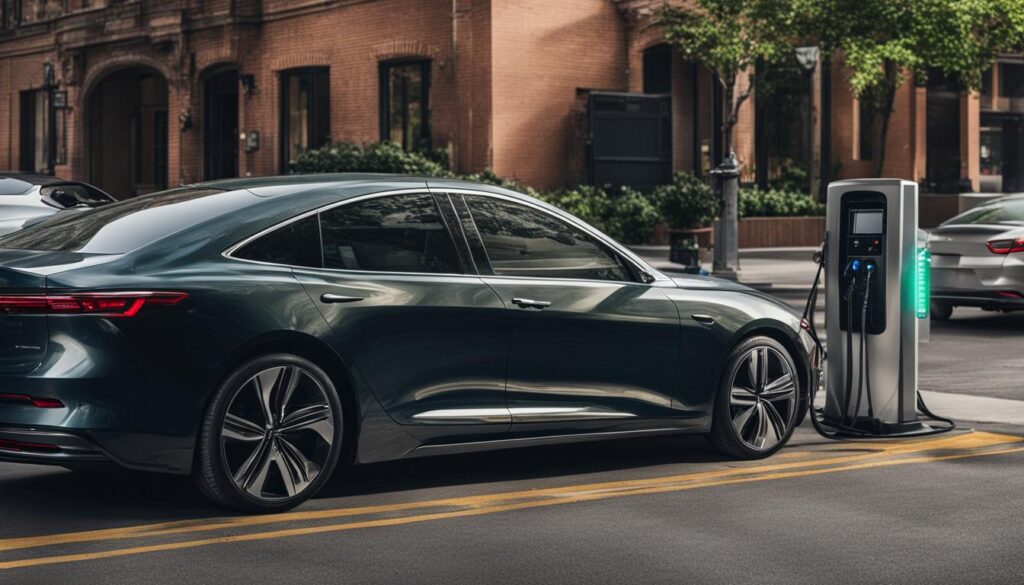
When electric vehicles first entered the market, their novelty and untested technology led to a rapid decrease in value over time. Early adopters faced significant depreciation as the demand and support infrastructure were in their nascent stages. However, the narrative has progressively shifted. With substantial investments by automakers like Tesla improving battery technology and vehicle design, modern EVs have transformed the calculus of value retention.
In contrast, ICE vehicles follow a more predictable depreciation path, influenced by market demand, fuel efficiency trends, and policy impacts on the broader automotive ecosystem. Reflecting on these variables is crucial when conducting a depreciation comparison between the two vehicle categories.
| Factor | Electric Vehicles | ICE Vehicles |
|---|---|---|
| Initial Depreciation Rate | Initially high, now stabilizing | Consistently moderate |
| Technology Advancements | Rapid improvements, longer range | Incremental updates, mature technology |
| Maintenance Costs | Lower due to fewer moving parts | Higher, requiring more upkeep |
| Brand Reputation Impact | Significant, influenced by pioneers like Tesla | Varied, dependent on manufacturer legacy |
| Policy Influences | Substantially swayed by incentives for green technology | Less affected, subject to fuel taxation and emission regulations |
| Market Demand | Growing as sustainability becomes a priority | Stable, but subject to shifts towards EV preferences |
Vehicles are not merely a means of transportation; they represent a significant financial undertaking. In the case of EVs, energy efficiency and lower maintenance costs have become pivotal factors that enhance their appeal and bolster their value over time. This is particularly evident with industry-leading brands that have consistently demonstrated an ability to retain value more effectively.
“Electric vehicles represent a new chapter in automotive history, with advanced technology challenging our previous notions of vehicle value and longevity.”
The depreciation rates of any vehicle type are subject to a litany of influences which span technological innovation, consumer perceptions, and economic incentives. Lessons learned from the ICE vehicle market give us a foundation, but as the prevalence of EVs rise, the playbook on depreciation is being rewritten. Factors unique to EVs, such as the potential longevity of their core components, place them in a favorable position, potentially upsetting the traditional ICE vehicle value calculus for decades to come.
- Technological breakthroughs set a trajectory for modified depreciation schedules.
- Consumer confidence in EVs, bolstered by success stories, tempers initial depreciation.
- Governmental policies augmenting EV adoption influence market dynamics.
In conclusion, an intimate understanding of vehicle depreciation is essential for making informed decisions in a transforming automotive marketplace. As the pivot towards electric mobility gains momentum, it is increasingly important to conceptualize how EVs and ICE vehicles stack up against the tapestry of depreciation, value retention, and ownership costs.
Factors Influencing Electric Vehicle (EV) Depreciation
As EV battery technology advances, its impact on the automotive landscape has been profound, particularly concerning the depreciation of electric vehicles. Innovative strides in battery life and efficiency are not merely altering consumer preferences but are also redefining residual value calculations. This section explores the critical factors that mold EV depreciation, acknowledging the intersecting roles of technological progression, market forces, and policy frameworks.
The Impact of Advancing Battery Technology

The pace of EV battery technology advancement significantly colors the rates at which EVs depreciate. Rapid increases in battery range, energy density, and overall longevity can prematurely age older models, compelling a faster rate of depreciation. Conversely, modular battery designs that accommodate upgrades and expansions may help to retain or even enhance an EV’s residual value. Promising features like vehicle-to-grid integration point to possible new revenue streams which could, in turn, affect EV depreciation patterns.
Amidst these technological waves, the traditional models designed to forecast automotive values—hitherto tailored for ICE vehicles—find themselves challenged by the novel profiles of EVs, as seen in the comparative table below:
| Battery Attribute | Impact on EV Depreciation |
|---|---|
| Battery Range Increases | May extend lifespan and retention of value |
| Higher Energy Densities | Residential values could increase due to enhanced performance |
| Modular Battery Systems | Enables upgrades, potentially increasing resale value |
| Vehicle-to-Grid Capabilities | New functionalities that could impact overall economic utility of EVs |
Market Dynamics and Consumer Adoption Rates
The adoption of electric vehicles is driven by market dynamics and accelerating consumer adoption rates. The fundamental interplay between supply and demand critically shapes EV residual values. Higher adoption rates, spurred by increasing environmental consciousness and recognition of EV advantages, bolster demand and sustain resale values. However, the further saturation of the market with electric vehicles could lead to a nuanced shift in this dynamic. Historical market patterns, similar to those observed with the SUV trend post-recession, suggest the potential for both short and long-term volatilities in residual values.
- Market supply influences immediate and projected adoption rates.
- Demand for EVs is being reflected in growing consumer enthusiasm.
- Economic factors and public perception could lead to shifts in depreciation rates.
Government Incentives and Infrastructure Developments
Lasting changes in EV infrastructure and the enactment of government incentives have an inextricable influence on EV depreciation rates. Targeted policies and incentives are potent catalysts for boosting EV adoption rates and mitigating the pace of their depreciation. Government schemes envisioning half of auto sales to be electric by 2030 and the proliferation of public chargers, encourage consumer shifts to electric vehicles. These policy actions affect not just the depreciation curve of EVs but cast ripple effects on the traditional ICE vehicle market as well.
“Robust governmental commitments to enhance the EV landscape are instrumental in steering market dynamics and substantively impacting vehicle depreciation across the board.”
While these incentives historically dampen depreciation, impending policy revisions concerning tax credits and material sourcing could add a layer of complexity, potentially altering market dynamics and EV value retention. Observing these regulatory developments is crucial for predicting the depreciation trajectory of electric vehicles and their fossil-fueled counterparts.
Comparing EV and ICE Vehicle Lifespans
The ongoing discourse surrounding EV lifespan comparison and ICE vehicle lifespans is integral to the automotive industry’s understanding of vehicle depreciation. The potential for EVs to disrupt traditional depreciation models hinges on their projected longevity, leading to considerable changes in consumer value perception.
This analysis explores the disparities between the durability and longevity impact on value of these two contrasting vehicle types.
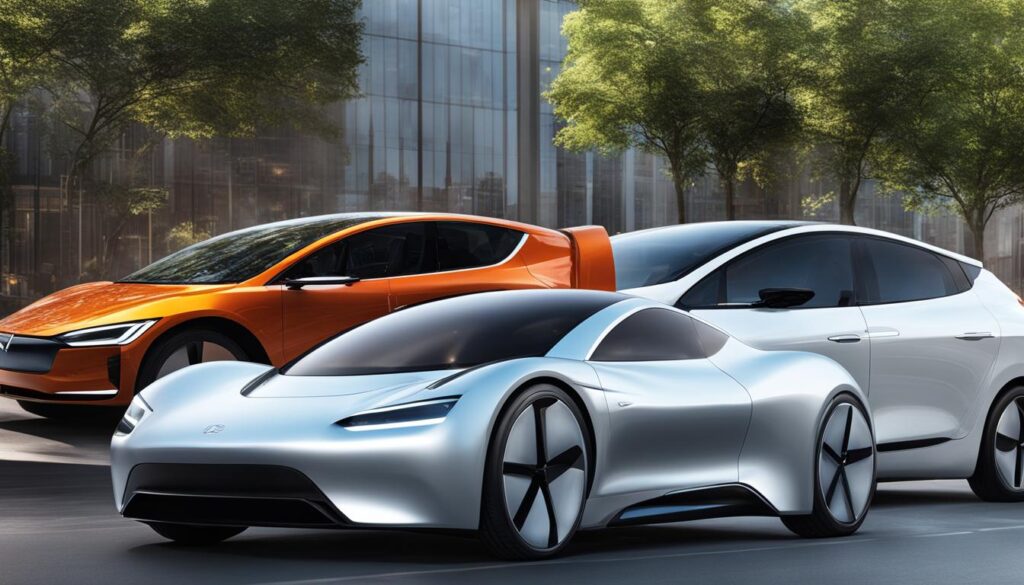
Electric vehicles boast a significantly reduced number of moving parts compared to their ICE counterparts, implying extended lifespans and potentially superior value retention.
Unlike ICE vehicles, which are susceptible to wear and tear from their complex mechanical components, EVs offer a simplified powertrain, resulting in lower maintenance needs and, by extension, longer operational life.
Yet, as battery technology and automotive innovation continue to evolve, it is necessary to consider how these advancements may influence long-term values for both EVs and ICE vehicles.
“The transition from traditional ICE vehicles to EVs not only represents a move towards sustainable transportation but also foretells a shift in the longevity impact on value, compelling a re-evaluation of automotive depreciation standards.”
| Vehicle Type | Lifespan Influences | Projected Longevity | Maintenance Considerations |
|---|---|---|---|
| Electric Vehicles (EVs) | Fewer moving parts, battery technology evolution | Expected to outlast ICE vehicles with proper maintenance | Primarily focused on battery health and electronics |
| Internal Combustion Engine (ICE) Vehicles | Engine wear and tear, fuel system complexities | Dependent on rigorous maintenance and part replacements | Extensive engine, transmission, and exhaust system care |
When considering the resale value, the longevity of an EV could far offset the initial investment, reflecting a trend toward a diminished rate of depreciation when compared to ICE vehicles.
This premise is supported by the minimalistic architecture of EVs which, in theory, sustain their operational efficiency for a more extended period. The following list encapsulates critical facets integral to the lifespan and value assessment of EVs vis-à-vis ICE vehicles:
- Battery Longevity: Advances in battery technology continue to extend the usable life of EVs.
- Maintenance Requirements: Reduced complexity in EVs means fewer mechanical failures and reduced maintenance over the vehicle’s life.
- Technological Adoption: The pace at which new technologies are adopted could render older models obsolete, affecting the depreciation rate of both EVs and ICE vehicles.
- Environmental Considerations: As global sustainability goals intensify, EVs gain a competitive edge in terms of lifecycle emissions and post-consumer recyclability.
In summation, while the full impact of EV longevity on market value remains a subject of active study, the prevailing indicators suggest a favorable outlook for electric vehicles in terms of depreciation resilience.
As both consumers and industry stakeholders continue to scrutinize EV lifespan comparison and the longevity impact on value, understanding these dynamics will become crucial in forecasting economic viability within the automotive sector.
The Evolving Landscape of Residual Values
The onset of new technologies in the automotive sector has given rise to a significant shift in the residual value evolution.
The traditional depreciation models, once well-established frameworks for dictating the value of internal combustion engine (ICE) vehicles, are now being put to the test by the advanced capabilities and enhanced efficiencies brought forth by electric vehicles (EVs).
This paradigm shift underscores a growing need to develop updated models that more accurately reflect the new technology impact on vehicle depreciation.
How New Technologies Challenge Traditional Depreciation Models
Will EVs and Ice have different degree of depreciation in the future? Lets look at the challenges ahead. New technologies embedded within EVs, such as sophisticated battery systems and regenerative braking, present a stark departure from ICE vehicles.
These innovations enhance energy efficiency and reduce operating costs, leading to different depreciation trajectories for EVs. The following table juxtaposes the effects of these new technologies on the residual values of EVs against traditional ICE vehicles:
| Technology | Impact on EV Residual Values | Impact on ICE Vehicle Residual Values |
|---|---|---|
| Advanced Battery Systems | Potentially increases the value retention due to longevity | Little to no direct impact |
| Regenerative Braking | Enhances energy efficiency, possibly slowing depreciation | N/A |
| Autonomous Features | May lead to greater valuation in the secondary market | Dependent on level of integration in ICE models |
| Over-the-Air Software Updates | Keeps EVs current, potentially increasing appeal to buyers | Limited by hardware constraints in ICE vehicles |
It is important to note that these advanced features serve as a fundamental redefinition of what contributes to vehicle value over time. The compressive lifespan of EVs, shaped by the software-centric orientation, allows them to stay current with the latest technological features, providing a contrasting dynamic to the more rapidly depreciating ICE vehicles that cannot as easily adapt to technological shifts.
“The advent of smart and connected electric vehicles has set in motion a new epoch in the automotive depreciation schedule—one that balances the cutting-edge technology with its residual value over time.”
- Increased energy efficiencies have upended the traditional fuel-based value considerations.
- Lower maintenance needs due to fewer moving parts factor into a more stable residual value assessment for EVs.
- EVs’ ability to integrate with sustainable energy ecosystems introduces new considerations into residual value models.
In this evolving automotive landscape, where EVs are quickly becoming central to the conversation, the residual value evolution is not just an economic concern but a marker of the broader shift towards a technology-driven, sustainable future. Understanding these changing dynamics is integral to anyone invested in the automotive industry, be it consumers, manufacturers, analysts, or investors seeking to navigate the new technology impact on vehicle depreciation.
Anticipated Shifts in the Automotive Sector
The automotive industry stands at a significant juncture as it navigates through the transition towards electric vehicles (EVs). Original equipment manufacturers (OEMs) are at the forefront, carefully strategizing their pathways in this era of EV emergence. These OEM strategies for EV transition are crafting new paradigms for vehicle life cycles and shaping the future of vehicular values.
Original Equipment Manufacturers (OEM) Strategies for EV Transition
OEMs are pivotal in molding the market’s reception of EVs. Their strategies encompass a wide variety of approaches to meet the brisk pace of electric mobility. Diverse investments in new EV technologies, modification of product lines to include more EVs, and partnerships with technology companies signify the inherent shifts within the industry.
- Expansion of EV product lines to meet an array of consumer demands.
- Partnerships with battery technology firms to advance powertrain capabilities.
- Engagement in research & development for improving EV efficiency and range.
- Implementing manufacturing processes tailored for sustainable approaches.
The calculated transition by OEMs is not solely to cater to market demand but also to reinvent the wheel of vehicle lifecycle value. Navigating the switch from ICE vehicles to EVs implicates not just technological advancements but also a careful reworking of their manufacturing and fiscal strategies.
Changing Consumer Preferences Impacting Vehicle Value
As consumer preferences trend unmistakably towards EVs, the impact on vehicle value becomes ever more significant. Factors such as environmental consciousness, technological affinity, and economical operation costs are inclining buyers towards a preference for EVs over traditional ICE vehicles. This inclination is inherently influencing the residual values of these vehicles.
| Consumer Preference | Impact on Vehicle Value |
|---|---|
| Environmental Sustainability | EVs with lower emissions are gaining value preference. |
| Operational Cost | Lower running costs of EVs enhance their value proposition. |
| Technological Integration | EVs offering advanced tech features are more sought-after. |
| Brand Perception | High-quality EV brands like Tesla have shown better value retention. |
Understanding these shifts sheds light on the broader market transformation. As automotive sector shifts are underway, the crucial aspects that were once the cornerstones in determining vehicle value factors, such as engine performance and fuel efficiency, are being replaced. Notably, markers such as the longevity of battery life and the availability of EV charging infrastructure are rising to the fore.
“Consumer sentiment is driving an unprecedented ripple through the automotive sector, bending the arc of industry standards towards a future where electric mobility defines value and appeal.”
These paradigm shifts compel auto industry leaders to redefine models of residual value to align with evolving consumer preferences impact. With premium EVs demonstrating higher value retention, and with consumer choice being a significant determinant, the future of automotive depreciation and value stands on the precipice of a revolution.
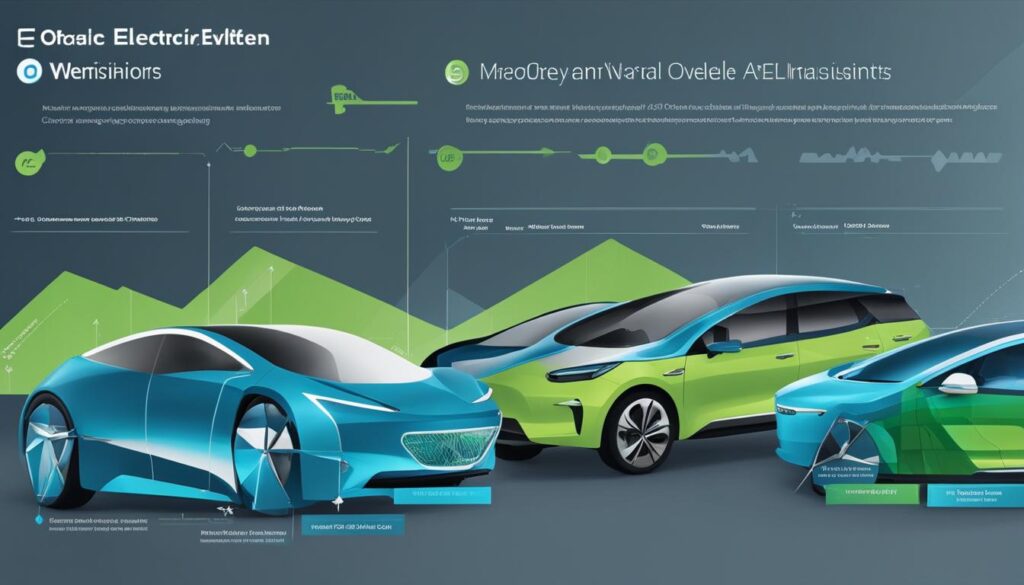
In adapting to these trends, informed decisions, novel approaches, and versatility in business attitudes are becoming the key tools for navigating the anticipated shifts in the automotive sector. Acknowledging and responding to the changes will be requisite for OEMs and other industry participants in establishing a stable foothold in the shifting sands of the automotive market.
ICE Vehicle Depreciation in the Emerging EV Market
The meteoric rise of the electric vehicle (EV) market poses significant questions about traditional ICE vehicle depreciation trends. As society’s awareness and demand for eco-friendly transportation options increase, the automotive industry is witnessing unprecedented shifts. These changes are casting a spotlight on the emerging EV market impact and its influence on the rate at which ICE vehicles lose their value over time.
The depreciation of ICE vehicles has historically been a matter of predictable trends influenced by factors such as mileage, vehicle condition, and brand reputation. However, the current automotive narrative is being rewritten as the EV market’s ascent changes consumer expectations and preferences in favor of sustainability and innovation. This market inclination suggests the possibility for a substantial acceleration in ICE vehicles’ depreciation rates.
Analyzing the data and recognizing patterns becomes vital for comprehending the depreciation curve in the automobile industry. The following table provides a clear contrast between how ICE vehicles and EVs are currently perceived in the market, which affects their depreciation.
| Depreciation Factor | Impact on ICE Vehicles | Impact on EVs |
|---|---|---|
| Consumer Preferences | Increased tilt towards EVs affects resale value negatively | Eco-conscious consumer base bolsters retention of value |
| Technological Advancements | Without significant innovation, falling behind in market desirability | Continuous enhancements in EV technology attract higher resale value |
| Sustainability | Environmental concerns and potential regulations depreciate value faster | Lower emissions and renewable energy compatibility increase longevity of value |
| Fuel Cost Predictions | Uncertainty in fuel prices potentially accelerates ICE vehicle depreciation | Irrelevance to fuel costs keeps depreciation rates lower |
As seen in the data above, the evolution of consumer habits heavily sways the current valuation of vehicles. The traditional allure of ICE vehicles is increasingly overshadowed by the advancements and ethical appeal of EVs.
“The EV revolution is redefining automotive value, pushing ICE vehicles towards a steeper depreciation trajectory.”
Moreover, the longevity of various vehicle components is beginning to play a game-changing role. EV batteries and engines, designed to outlast many ICE vehicle components with minimal maintenance, are establishing a new benchmark in vehicle lifespan evaluation.
- Advancements in EV battery life extend the economic viability of electric vehicles.
- Increasing network of charging infrastructure enhances the practicality of owning an EV.
- Global push towards emissions standards prompts quicker ICE vehicle value drop.
Understanding ICE vehicle depreciation in this new landscape requires automotive industry participants to anticipate and navigate the challenges and opportunities that come with the EV renaissance. With an eye towards the horizon, industry leaders must reassess their strategies in light of emerging EV market impact to sustain relevance and competitiveness.

Regulatory Policies and Their Effect on EV Depreciation
The landscape of electric vehicle (EV) depreciation is continuously shaped by the influence of regulatory policy effects. With governments globally implementing policies to reduce carbon emissions and promote sustainable transportation, a marked difference is emerging in the EV depreciation influence. These policies range from incentives designed to spur EV adoption to restrictions intended to localize production and reduce reliance on critical foreign materials.
One of the cornerstones of these initiatives is the introduction of financial incentives for consumers, such as tax credits and rebates, which reduce the upfront cost of purchasing an EV and can potentially slow the rate of depreciation. Furthermore, significant investments in charging infrastructure aim to increase the convenience and feasibility of EV ownership, simultaneously enhancing the resale value of electric vehicles.

Conversely, supply chain regulations can create challenges that may inadvertently accelerate EV depreciation. Policies dictating the sourcing of battery components, for example, can lead to increased production costs and limited vehicle availability, thus affecting resale value perceptions. Here, we examine the dichotomy within these regulation-induced influences and consider their implications on the EV market’s future.
Consumer Incentives and EV Adoption
| Policy Initiative | Expected Impact on EV Depreciation |
|---|---|
| Federal and State EV Tax Credits | Slows EV depreciation by reducing consumer cost |
| Grants for Charging Infrastructure | Stabilizes EV value by improving usability |
| Subsidies for EV Manufacturers | May reduce production costs, supporting better resale values |
Supply Chain Constraints and Their Ramifications
“The complexity of regulatory policies bears a direct impact on the EV market. While incentives encourage adoption, stringent supply chain regulations may pose new challenges for EV depreciation.”
Local content requirements and restrictions on the use of materials from certain regions can disrupt vehicle production, lead to higher costs, and limit the availability of EVs. These disruptions can cause a short-term acceleration in the depreciation rates as manufacturers and consumers adjust to the regulatory environment.
- Material Sourcing Restrictions: Can increase manufacturing costs, potentially raising purchase prices and influencing depreciation.
- Localization of Assembly: May limit the choice of available models, affecting supply-demand dynamics and resale value.
- Trade Tariffs: If imposed, could elevate costs and contribute to swifter EV depreciation.
As we move forward, it is crucial for stakeholders to remain vigilant about the development of regulatory frameworks. The delicate balance between incentivizing EV adoption and maintaining a sustainable, localized supply chain stands to significantly shape the EV depreciation influence. It will be the prerogative of policymakers to craft regulations that bolster the growth of the EV sector without imposing undue constraints that could hinder its progress.
In summary, it is clear that the policy measures enacted today will have lasting repercussions on the value of EVs tomorrow. The dynamic interplay between encouraging consumer adoption and managing the industry’s supply side highlights the critical role that regulatory policy effects play in the future of vehicle depreciation.
Manufacturers’ Role in Shaping Future Vehicle Depreciation
The role of manufacturers in dictating the pace at which vehicle values decline cannot be overstated. Influential decisions regarding vehicle production impact on value, along with strategic responses to evolving market demands and regulatory changes, pivotally influence vehicle depreciation rates. By innovating their lineups and crafting distinct product features, vehicle manufacturers exert significant control over the residual values of Electric Vehicles (EVs) and Internal Combustion Engine (ICE) vehicles alike. This section examines how manufacturers’ approaches to design, technology integration, and market forecasting serve as vital determinants of how vehicles sustain their worth over time.
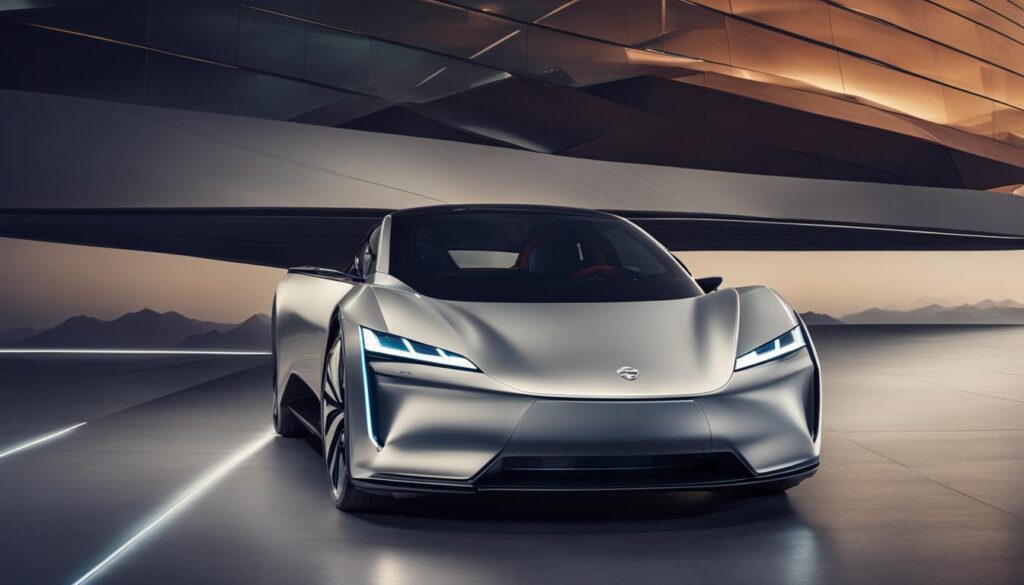
Vehicle production design, especially in the realm of EVs, has seen substantial shifts in form and function, as manufacturers strive to meet consumer expectations for innovative and environmentally friendly options. Such design refinements contribute to extending the operational longevity of EVs, consequently affecting their depreciation curve. As manufacturers’ influence on depreciation becomes more pronounced, it’s crucial to understand the key areas where this influence is most observable.
Strategic Production Design Impacting Depreciation Rates
- Incorporation of cutting-edge technologies that promise longer vehicle lifespans.
- Manufacturing with high-quality materials to reduce wear-and-tear and maintenance costs.
- Creative design choices that resonate with modern aesthetics and consumer trends.
- Integration of features like autonomous driving, enhancing the vehicle’s desirability and value retention.
Adaptability to Regulatory Changes and Market Demands
“As governments worldwide push for greener, more sustainable vehicles, manufacturers that stay ahead of policy trends can better safeguard their vehicles against rapid depreciation.
Staying attuned to policy shifts and actively participating in shaping these discussions allows manufacturers to plan for production that aligns with future market directions. Such proactive behavior not only ensures compliance but can also grant a competitive edge in terms of vehicle value longevity.
Diversification of Models Affecting Residual Value
The expansion of EV models and the flexibility to customize offerings to niche markets have become part of manufacturers’ strategies to manage the depreciation rates of their products. By catering to a wider consumer base and ensuring that there are multiple options at various price points, manufacturers can influence the perception, demand, and subsequently the residual values of their vehicles.
| Manufacturing Strategy | Impact on EV Depreciation | Impact on ICE Depreciation |
|---|---|---|
| Quality of Onboard Technology | High-quality tech can mitigate EV depreciation | Limited impact unless significant innovation is introduced |
| Sustainable Materials Use | May enhance long-term value preservation | Could slow depreciation if perceived as value-add |
| Product Line Diversity | Wide-ranging models adjust market supply dynamics | Diverse options can attract wider consumer interests |
| Aesthetic and Functional Design | Aesthetically pleasing EVs may enjoy slower value decline | Design improvements can provide a temporary shield against rapid ICE depreciation |
In conclusion, as vehicle production impact on value remains a pivotal aspect of automotive economics, the direct manufacturers’ influence on depreciation signifies a critical area of analysis. Manufacturers not only have the capacity to engineer EVs and ICE vehicles for better longevity and desirability but are also key players in adapting to and shaping an industry ripe with technological innovation and regulatory evolution.
Conclusion
The emergent data on vehicle depreciation in the face of electrification accentuates the value proposition of EVs compared to their ICE counterparts. Evaluating EV investment becomes notably compelling as advancements in technology, shifts in consumer mindsets, and supportive regulatory frameworks lean in favor of EVs’ market impact. The future of vehicle resale values leans towards a narrative where EVs may not only prove to hold their value longer but also dismantle long-standing depreciative norms associated with traditional vehicles.
For consumers and industry stakeholders alike, keenly understanding these trends is indispensable. As the EV market impact unfolds, it brings to light both the opportunities and the challenges in the realm of automotive sales and leasing. The trajectory at which these shifts will continue could potentially redefine the automotive sector’s approach to the total cost of ownership and the economic calculus of both EV and ICE vehicle lifespans.
While navigating this terrain, it remains clear that the ability of the automotive industry to anticipate, adapt, and innovate is pivotal. With the marketplace dynamically progressing towards an electrified horizon, the success of manufacturers, consumers, and financiers will hinge on their adeptness at maneuvering through the evolving landscape of vehicle depreciation values. The interplay between developing technology, environmental imperatives, and market adoption rates continues to steer the course of both EV and ICE vehicles, promising a revolutionized future for the auto economy.
FAQ
How are future vehicle depreciation trends expected to differ between EVs and ICE vehicles?
Future vehicle depreciation trends are expected to show a divergence between electric vehicles (EVs) and internal combustion engine (ICE) vehicles. EVs are projected to retain their value better due to advancements in battery technology, reduced maintenance requirements, increased consumer demand, and supportive governmental policies. ICE vehicles might face more rapid depreciation due to evolving consumer preferences towards more sustainable options and the anticipated obsolescence brought on by advancements in EV technologies.
What factors contribute to the understanding of vehicle depreciation for EVs and ICE vehicles?
Several factors contribute to understanding vehicle depreciation, including the vehicle’s energy efficiency, maintenance costs, market demand, technological progress, and policy frameworks. For EVs, additional considerations include the pace of battery technology advancements, infrastructure development, and the influence of government incentives. ICE vehicle depreciation continues to be influenced by technological evolution and shifts in consumer buying behavior.
How does advancing battery technology impact EV depreciation?
Advancing battery technology greatly impacts EV depreciation. Improvements in battery range, energy density, and longevity can enhance the appeal and value retention of EVs. Conversely, older models with outdated battery technology may depreciate faster as they become less attractive to consumers seeking the latest advancements. Battery replacement programs and modularity can mitigate these effects by allowing for technological updates.
What role do market dynamics and consumer adoption rates play in EV depreciation?
Market dynamics and consumer adoption rates are pivotal in shaping EV depreciation. High demand for EVs can lead to better residual values, while slow adoption may result in higher depreciation rates. Factors such as overall market acceptance, the prevalence of charging infrastructure, and the economic landscape influence consumer behavior and, consequently, how well EVs maintain their value.
How might government incentives and infrastructure developments affect EV depreciation?
Government incentives and infrastructure developments can have a positive effect on EV depreciation by encouraging broader adoption and making EV ownership more convenient. Tax credits, grants, and investments in charging networks reduce the total cost of ownership and increase the practical appeal of EVs, potentially slowing their rate of depreciation.
In what ways does the lifespan of EVs compare to ICE vehicles?
The lifespan of EVs is generally expected to be longer than that of ICE vehicles due to the fewer moving parts in electric drivetrains, which can result in less wear and tear. This potential for increased longevity suggests that EVs could experience a slower rate of depreciation compared to ICE vehicles, although actual outcomes will depend on various factors, including technological developments and changing consumer perceptions.
How are emerging technologies challenging traditional vehicle depreciation models?
New technologies such as improved battery systems, autonomous driving features, and vehicle-to-grid capabilities are challenging traditional depreciation models that were originally based on the aging of ICE vehicles. These innovations may extend the useful life of EVs, reduce maintenance costs, and offer new uses for vehicles, requiring updated models to accurately predict residual values.
What strategies are OEMs implementing in response to the EV transition, and how might this affect depreciation?
OEMs are implementing various strategies in response to the EV transition, including investing in EV development, adjusting product mixes, and planning for future infrastructure needs. These strategies can influence the availability, desirability, and subsequent depreciation of both EVs and ICE vehicles by shaping what is on offer and aligning with consumer demands for cleaner and more advanced vehicles.
How are changing consumer preferences impacting vehicle value?
Changing consumer preferences, particularly the increasing interest in sustainability and advanced vehicle technologies, are significantly impacting vehicle values. Preferences for EVs with higher range, better performance, and environmentally friendly credentials are increasing their resale value and slowing depreciation, while potentially accelerating the depreciation of less preferred ICE vehicles.
What is the anticipated impact of the emerging EV market on ICE vehicle depreciation?
As the EV market continues to grow, ICE vehicles are likely to depreciate at a faster rate. The increasing preference for EVs, climate change concerns, and the potential for future regulations restricting the use of ICE vehicles all contribute to the expectation of a quicker loss in value for traditional ICE vehicles in the emerging EV landscape.
How do regulatory policies affect EV depreciation rates?
Regulatory policies can majorly affect EV depreciation rates. For instance, policies providing consumer tax incentives, subsidies for EV purchases, or investments in charging infrastructure can lower the overall cost of owning an EV and support stronger residual values. Conversely, policies that create barriers for EV adoption, such as restrictions on tax credits or materials sourcing, can negatively impact EV depreciation rates.
In what way does the vehicle production strategy of manufacturers influence future vehicle depreciation?
Manufacturers’ production strategies can influence future vehicle depreciation by determining the types of vehicles available in the market. Decisions to produce more EVs, introduce advanced technologies, or diversify product offerings can affect the supply and demand balance, thus impacting how both EVs and ICE vehicles maintain their value over time.
